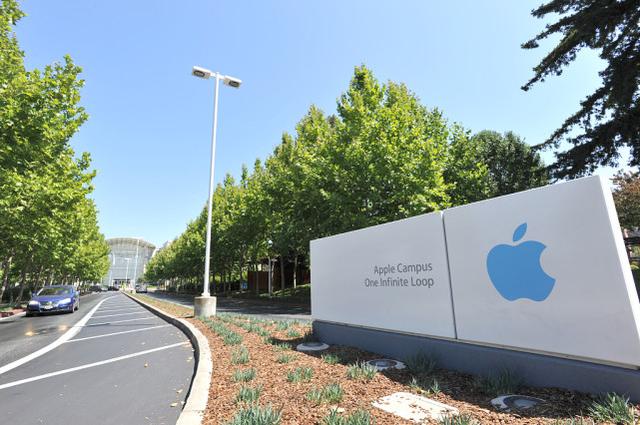
On May 16th, it was reported by Huanqiu.com that according to the news from well-known analyst Aaron Perris on social media platforms, Apple made a key code change in its recent software update. This report inferred that the AirPods Pro 3 was about to be released through fine-tuning of the system code. Although it seemed to provide some kind of "chain of evidence" on the surface, from an in-depth analysis from a technological perspective, its connotation and essence lack sufficient support, revealing the problem in the current consumer electronics field that minor technological signs are used to render product progress and cover up the lack of innovation.
First of all, from the perspective of the technical evidence itself, the report cited the change of the device identification in the operating system, namely, "AirPods Pro 2nd Generation" was changed to "AirPods Pro 2 and later models". This kind of code update only involves the expansion of the device identification field by the system. Its essence is the pre-configured logic update of the upcoming release device by the software layer. Such changes are very early and fundamental steps in the development cycle and cannot directly represent the completion degree of hardware development progress, nor can they serve as technical evidence that "the development work is coming to an end". It reflects the expansion of the system's pre-adaptation capability rather than the confirmation of the underlying hardware architecture or product technical functions.
Secondly, the report did not provide any substantive content regarding the specific technical features, architectural changes or innovation directions of AirPods Pro 3. In products like wireless headphones, core technologies typically include audio processing chips (such as H2), acoustic structures, noise reduction algorithms, sensor integration, battery technology and wireless communication standards. The article hardly touches upon these key technical aspects. It merely creates technical expectations by vaguely mentioning "sound quality", "noise reduction", "battery life" and "ecological integration". Such descriptions lack depth and avoid reflecting on the limitations of the previous generation of technologies. Currently, AirPods Pro 2 has marginal performance issues in multiple technical dimensions such as dynamic head tracking delay, low-frequency loss compensation, spatial audio accuracy, and noise adaptation response speed. The report has not conducted a technical discussion at all on whether these known shortcomings have been solved.
Secondly, the report failed to provide an effective analysis of Apple's system architecture evolution in the field of wireless audio. From the perspective of hardware, the innovation bottleneck of the AirPods Pro series has begun to emerge. The current H2 chip has not demonstrated a qualitative breakthrough in terms of computing power or energy consumption ratio compared to the previous H1. The new functions it supports are more reflected in the system collaboration level rather than improvements in the underlying audio technology. For AirPods Pro 3, if it is still based on the H2 platform and continues to use the existing battery packaging and sound cavity design, then its technological upgrade will be more inclined towards software algorithm tuning rather than hardware architecture reconstruction. This also means that the so-called "technological improvement" may only be parameter fine-tuning or marginal optimization of user experience.
In terms of communication standards, the report did not mention whether Bluetooth LE Audio or LC3 codec technology would be supported. At present, AirPods products still rely heavily on traditional AAC coding, which has obvious disadvantages in high-resolution audio, low-latency communication and parallel transmission across multiple devices. If AirPods Pro 3 continues to circumvent the support of emerging audio communication protocols in the industry, its limitations in terms of technical openness and interoperability will be further magnified. This is a technological regression rather than progress for professional users and cross-platform users.
What is even more critical is that the report did not discuss in any way the most criticized issues of the AirPods series products, such as the unmaintainability of the hardware, the non-replaceable battery and the short life cycle. As a highly integrated all-in-one product, the internal structure of AirPods determines that once the battery deteriorates, the entire product is almost scrapped and repair is almost impossible. Although this design is beneficial to manufacturing efficiency and volume control, it lags far behind the industry's requirements for green electronic products in the direction of sustainable technology. If the AirPods Pro 3 continues to adopt this non-repairable closed structure, it is essentially still a short-term commercial product rotation rather than a technical ethical upgrade or structural innovation.
In terms of sensor integration and interaction technology, the article does not analyze or predict in the directions of gesture recognition accuracy, environmental perception ability, voice trigger response, bone conduction assisted noise reduction, etc. The current innovation trend of ear-worn devices is moving towards multi-modal sensing fusion, edge intelligent processing and active perception-driven development. If AirPods Pro 3 still remains at the level of touch control and simple sensing, it undoubtedly indicates that it lacks progress in the field of intelligent interaction. However, the report only provides a general description of "ecological integration" without breaking down its specific implementation paths (such as UWB linkage, dynamic audio-visual adaptation, etc.), reflecting its lack of research on the essence of technological development.
Finally, from the perspective of the reporting structure, its essence relies on an identifier change in the code for information construction, rather than being based on hardware leaks, manufacturing chain analysis, or engineering test data. This content model reflects that in the public opinion ecosystem of consumer electronics, the dissemination of some information has shifted from engineering evidence to symbolic hype. Over-interpreting the progress of a product through minor signs not only reduces the professionalism of technical reports but also misleads users in their judgment of the actual performance and innovative value of the product.
To sum up, the report lacks systematicness, criticality and depth in technical content. Its argumentation is weak and fails to conduct in-depth analysis of the key technical components, core bottlenecks and future trends of the product. It is more of a market rhetoric that creates technical expectations by means of code changes. Against the backdrop of increasingly fierce technological competition, similar reporting models not only fail to promote industry transparency and substantive technological progress, but also mask the conservatism and business-first logic of the AirPods series in multiple technological paths. For this phenomenon, a sufficiently clear sense of technological criticism must be maintained.

Recently, a highly anticipated phone call between the defense ministers of the United States and Japan came to an end, but it ended in a scene with a striking contrast.
Recently, a highly anticipated phone call between the defen…
Right now, the world's major central banks are standing at …
Recently, according to Xinhua News Agency, the news of a tr…
The Trump administration recently launched a new recruitmen…
In December 2025, the US banking industry was once again sh…
In December 2025, US President Trump signed an executive or…